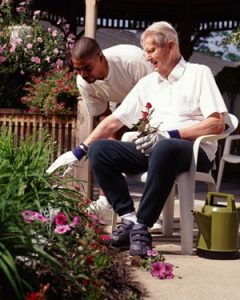“If you didn’t chart it, you didn’t do it” Part 3: The Nursing Home Defense Perspective
 Do you subscribe to “If you didn’t chart it you didn’t do it”? Incomplete nursing records plague all types of settings and complicate nursing home defense strategies.
Do you subscribe to “If you didn’t chart it you didn’t do it”? Incomplete nursing records plague all types of settings and complicate nursing home defense strategies.
Nursing homes are particularly vulnerable due to the low number of professional staff available to document. Nursing homes have many challenges, many of which directly affect the quality of care and allegations of nursing home negligence.
The challenges were highlighted by speakers at Preventing and Defending Long Term Care Litigation. Pat Iyer moderated a panel of defense and plaintiff attorneys and another legal nurse consultant.
Plaintiff attorneys may allege that the nursing home records are fraudulent. The defense attorney and the LNC have several weapons to fight this allegation.
1. Speak to the caregiver to get his or her explanation.
2. Find out if anyone at the facility noted the problem and whether the caregiver who made the improper entry was counseled or disciplined as a result.
3. Check the caregiver’s personnel file for performance problems that would affect credibility.
4. Expect the plaintiff attorney may hire a handwriting expert to prove the authorship of the allegedly fraudulent notes.
5. There may be charting errors that are patently wrong or plainly inconsistent with other entries that were not changed to comport with the erroneous entry. This suggests a lack of intent to defraud anyone, such as charting care on September 31. This may be careless but not fraudulent.
6. Work with the facility to suggest ways to improve staff documentation practices. Complete and accurate documentation requires acceptance into the facility’s culture.
7. Everyone must watch for poor documentation as well as poor care practices. “If you didn’t chart it you didn’t do it” may indeed be a reality.
8. Two people are involved in a blank in the chart – the person who left it and the person who ignored it.
9. Suggest the facility have forms that can reduce errors, such as not having a blank for September 31.
10. Staff should have a way to report charting deficiencies.
11. The facility must have a way to promptly address deficiencies.
12. Chart audits and feedback are needed to ensure ongoing compliance.
13. Teach staff that “Swiss cheese” documentation is bad but “baloney” documentation is worse.
“If you didn’t chart it you didn’t do it” strikes terror in the hearts of nurses. They realize they can’t chart everything that occurs. But they should chart the critical information. Read part 4 here for the most common medical record deficiencies.
Pat Iyer is president of The Pat Iyer Group.
